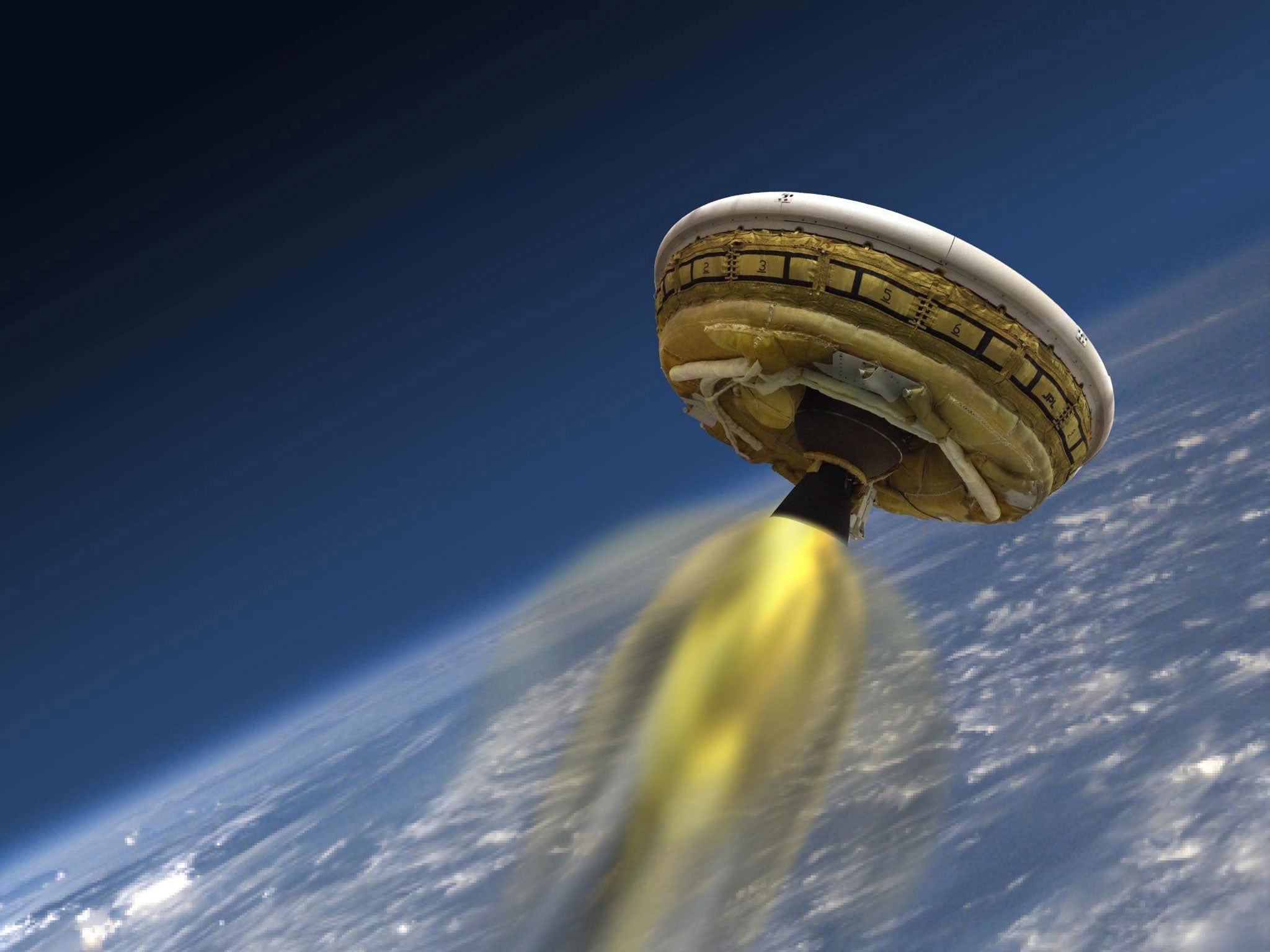Nasa 'flying saucer' hoped to deliver astronauts to Mars splashes back down to earth
Video: The technology could one day take heavy spacecraft and astronauts on NASA's eventual trip to Mars, though hit some problems in its first outing

A saucer-shaped NASA vehicle testing new technology that could one day help humans land on Mars made a successful rocket ride over the Pacific, but its massive descent parachute only partially unfurled.
The space agency hopes that the technology used in the 150 million dollar (£88 million) experimental flight will one day replace the current parachute design, which has been used since 1976.
The Low Density Supersonic Decelerator was lifted by balloon 120,000 feet into the air from the Hawaiian island of Kauai. The vehicle then rocketed even higher before deploying a novel inflatable braking system.
But cheers rapidly died as a gigantic chute designed to slow its fall to splashdown in the ocean emerged tangled.
Still, NASA officials said it is a pretty good test of technology that might one day be used to deliver heavy spacecraft - and eventually astronauts - to Mars.
Since the twin Viking spacecraft landed on the red planet in 1976, NASA has relied on the same parachute design to slow landers and rovers after piercing through the thin Martian atmosphere. If NASA is to succeed in getting human explorers to the planet, it needs to develop new ways to take heavier payloads to the planet.
Despite small problems like the giant parachute not deploying fully, NASA deemed the mission a success.
"What we just saw was a really good test," said NASA engineer Dan Coatta with the Jet Propulsion Laboratory in Pasadena, California.
Viewers around the world with an Internet connection followed portions of the mission in real time thanks to cameras on board the vehicle that beamed back low-resolution footage.
After taking off from the Pacific Missile Range Facility on the Hawaiian island of Kauai, the balloon boosted the disc-shaped vehicle over the Pacific.
Its rocket motor then ignited, carrying the vehicle to 34 miles high at supersonic speeds.
The environment that high up is similar to the thin Martian atmosphere. As the vehicle prepared to drop back the Earth, a tube around it expanded like a Hawaiian puffer fish, creating atmospheric drag to dramatically slow it down from Mach 4, or four times the speed of sound.
Then the parachute unfurled and guided the vehicle to an ocean splashdown about three hours later. At 110 feet in diameter, the parachute is twice as big as the one that carried the 1-ton Curiosity rover through the Martian atmosphere in 2011.
The test was postponed six times because of high winds. Winds need to be calm so that the balloon does not stray into no-fly zones.
Engineers planned to analyse the data and conduct several more flights next year before deciding whether to fly the vehicle and parachute on a future Mars mission.
"We want to test them here where it's cheaper before we send it to Mars to make sure that it's going to work there," project manager Mark Adler of the NASA Jet Propulsion Laboratory said during a pre-launch news conference in Kauai in early June.
The technology envelope needs to be pushed or else humanity will not be able to fly beyond the International Space Station in low-Earth orbit, said Michael Gazarik, head of space technology at NASA headquarters.
Technology development "is the surest path to Mars," he said.
PA
Subscribe to Independent Premium to bookmark this article
Want to bookmark your favourite articles and stories to read or reference later? Start your Independent Premium subscription today.

Join our commenting forum
Join thought-provoking conversations, follow other Independent readers and see their replies